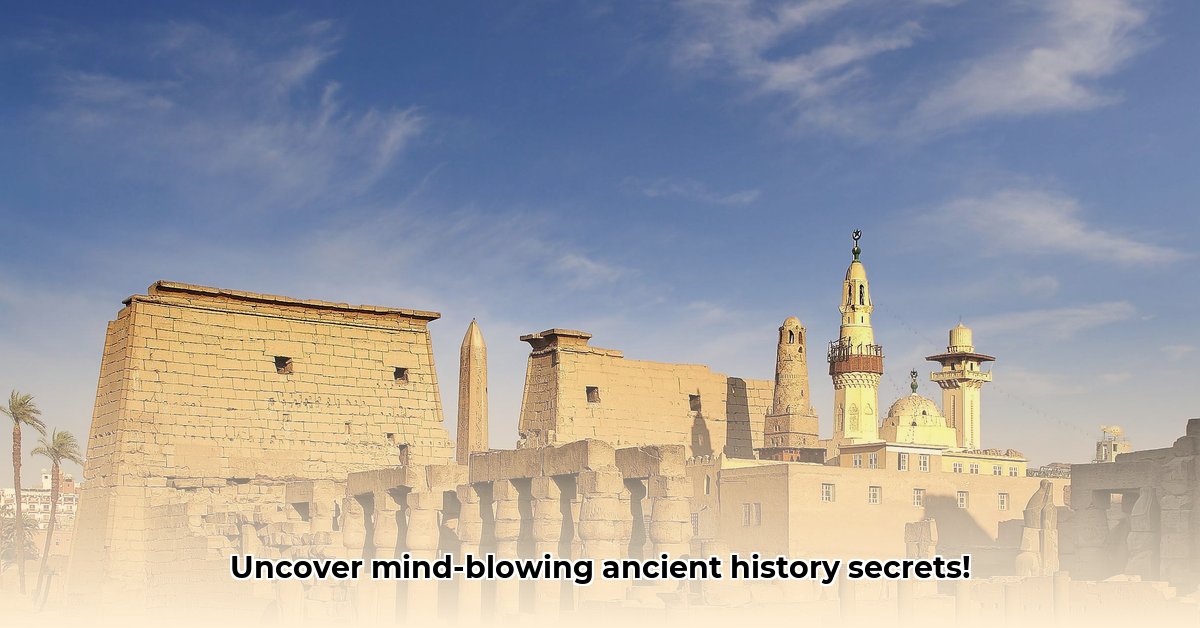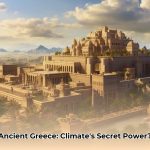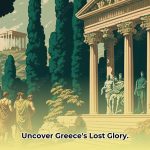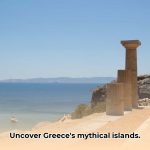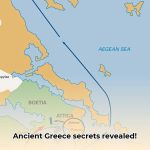Ever wondered about the weird and wonderful secrets of ancient history? Like, did the Romans *really* bathe that much, or how on Earth did the Egyptians build those colossal pyramids? Forget those dusty history books! We’re embarking on a thrilling adventure filled with fascinating facts about ancient civilizations – from cunning political maneuvers to ingenious inventions that still resonate today. We’ll reveal incredible details, challenge your mind with quizzes, and even explore how ancient wisdom can offer insights for our modern world. Prepare to be captivated by the ancient world and discover its enduring influence on our lives! Test your knowledge with this [fun ancient history quiz](https://www.lolaapp.com/ancient-history-quiz/)
Ancient World History Trivia: Unearthing Fun Facts and Testing Your Knowledge
Let’s journey back through the mists of time and uncover some truly astonishing facts about the ancient world! We’ll delve into the grandeur of the Roman Empire, explore the captivating mysteries of Ancient Egypt, and marvel at the groundbreaking achievements of Mesopotamia. Get ready to be amazed – and perhaps even delightfully surprised – by the historical trivia and captivating discoveries that await! This isn’t your average, run-of-the-mill history lesson; it’s a whirlwind adventure through time designed to ignite your curiosity and expand your knowledge.
5 Mind-Blowing Facts About the Roman Empire: Roman History Trivia
The Roman Empire – a name that conjures vivid images of gladiators locked in fierce combat, powerful emperors ruling vast territories, and awe-inspiring architectural marvels that have stood the test of time. But beyond these iconic symbols lies a complex and fascinating tapestry of history, filled with unexpected twists and turns. Prepare to be astonished as we uncover remarkable achievements and intriguing aspects of Roman civilization that go far beyond the familiar stories:
- Roman Concrete: An Unrivaled Engineering Feat: Roman concrete wasn’t just any ordinary construction material; it was an incredibly durable substance, far surpassing the quality of many modern concretes. By adding volcanic ash to the mixture, Roman engineers created a material that was not only incredibly strong but also remarkably resistant to the ravages of time. This explains why so many Roman structures, from aqueducts to amphitheaters, still stand proudly today! Imagine the extraordinary engineering skills required to develop and utilize such an advanced material.
- Lead: A Hidden Danger in Roman Life: The Romans were prolific users of lead, employing it extensively in their water pipes and cookware. While lead was a readily available and easily workable material, we now understand that it posed a significant health hazard. Widespread lead poisoning likely impacted Roman society in profound ways, affecting everything from fertility rates to cognitive function. This serves as a sobering reminder that even seemingly advanced civilizations can make critical mistakes with far-reaching and devastating consequences.
- Gladiators: Celebrated Athletes and Skilled Warriors: Gladiatorial combat was far more than just a brutal form of entertainment; it was a highly organized and ritualized spectacle that held immense cultural significance. Gladiators were not simply expendable pawns; they were highly trained athletes and skilled warriors with specialized weapons, fighting styles, and rigorous training regimens. They were the superstars of their time, attracting massive crowds and inspiring both admiration and fear.
- Roman Roads: The Arteries of an Empire: Rome’s extensive network of roads was not merely a collection of dirt paths; it was a meticulously planned and expertly constructed system of highways that crisscrossed the empire. These roads were masterfully engineered marvels, built to last for centuries. They were crucial for facilitating trade, enabling the rapid movement of troops, and ensuring efficient communication across vast distances. In essence, they served as the very arteries of the empire, connecting its diverse regions and fostering economic prosperity.
- Roman Empire: Masters of Assimilation and Cultural Integration: The Romans were not simply conquerors who imposed their culture upon subjugated peoples. Instead, they often embraced aspects of the cultures they encountered, integrating foreign gods, customs, and traditions into their own society. This remarkable ability to assimilate and adapt led to a vibrant, ever-evolving culture that was constantly enriched by new influences. This cultural blending broadened Roman life significantly.
Quick Quiz:
- What unique ingredient gave Roman concrete its exceptional strength and longevity?
- What common material, widely used by Romans, likely contributed to widespread health problems throughout the empire?
- Beyond the arena, what was required to become a gladiator?
10 Things You Didn’t Know About Ancient Egypt: Unearthing Egyptian Trivia
Ancient Egypt – a land of towering pyramids, enigmatic pharaohs, and intricate hieroglyphs – continues to captivate our imaginations with its rich history and enduring mysteries. Let’s peel back some of the layers of time and explore some surprising facts that shed new light on this remarkable civilization:
- Bald Was Beautiful (Wigs Were Essential!): Ancient Egyptians shaved their entire bodies, including their heads, as a matter of hygiene and comfort in the hot desert climate. However, they also prized elaborate hairstyles, which they achieved through the use of wigs. These wigs were far more than just hairpieces; they were potent symbols of status, wealth, and social standing. The more elaborate and ornate the wig, the higher the person’s position in society.
- Cleopatra and the iPhone?: A Matter of Perspective: Incredibly, Cleopatra, the last active ruler of the Ptolemaic Kingdom of Egypt, lived much closer in time to the invention of the iPhone than to the construction of the Great Pyramid of Giza. This stark comparison vividly illustrates the immense passage of time between these pivotal events in human history, highlighting the vastness of the ancient world.
- Surgical Pioneers: Ancient Egyptian Medical Marvels: The ancient Egyptians possessed an astonishingly advanced understanding of medicine for their time. They developed sophisticated surgical techniques, including the ability to perform brain surgery with remarkable precision. This underscores the depth of their medical knowledge, their skill in surgical procedures, and their commitment to advancing the healing arts.
- Women’s Rights: A Progressive Society: Compared to many other ancient societies, Egyptian women enjoyed a remarkably high level of social and economic freedom. They had the right to own property, conduct business transactions, enter into contracts, and even initiate divorce proceedings. Some women held positions of authority, serving as priestesses or administrators.
- Cats: More Than Just Furry Companions: Cats held an exceptionally revered position in ancient Egyptian society, elevated to the status of almost sacred animals. They were associated with the goddess Bastet, protector of the home and family, and were believed to possess magical powers. Cats were often mummified after death and buried with elaborate funerary offerings, reflecting their elevated status.
- Gaming in Ancient Egypt: A Favorite Pastime: Board games were an immensely popular form of recreation and entertainment in ancient Egypt. Senet, a strategic game of skill and luck, was particularly beloved, enjoyed by people from all walks of life. The popularity of board games suggests a society that valued leisure time, social interaction, and mental stimulation.
- Tutankhamun’s Treasure Trove: A Glimpse into the Afterlife: The extraordinary discovery of Tutankhamun’s remarkably well-preserved tomb in 1922 provided unparalleled insights into ancient Egyptian funerary practices, religious beliefs, and artistic achievements. The tomb was filled with an astonishing array of artifacts, including golden treasures, royal regalia, and everyday objects intended to accompany the young pharaoh into the afterlife.
- Pyramids: Engineering Marvels and More: The pyramids were not simply monumental tombs; they were also sophisticated engineering marvels that embodied the ancient Egyptians’ advanced knowledge of mathematics, astronomy, and construction techniques. The precise alignment of the pyramids with the cardinal directions and their intricate internal chambers reflect a deep understanding of the cosmos. Their construction was a remarkable feat of engineering and organization, requiring meticulous planning, skilled labor, and immense resources.
- Hieroglyphs: Unlocking the Secrets of Ancient Egypt: Hieroglyphs, the ancient Egyptian writing system, were far more than just simple pictures; they were a complex and nuanced system of symbols that conveyed a wide range of meanings. Understanding hieroglyphs required a deep knowledge of the language, culture, and religious beliefs of ancient Egypt. The decipherment of hieroglyphs in the 19th century, thanks to the Rosetta Stone, unlocked a vast treasure trove of information about this fascinating civilization.
- The Nile: The River of Life: The Nile River was the very lifeblood of ancient Egypt, providing a constant source of fresh water for agriculture, transportation, and sanitation. The annual flooding of the Nile deposited fertile silt on the surrounding land, creating ideal conditions for growing crops. The river also served as the main transportation route, connecting Upper and Lower Egypt and facilitating trade and communication. In essence, the Nile was the heart of Egyptian civilization, shaping its economy, society, and culture.
Quick Quiz:
- Besides wigs, what did ancient Egyptians never shave?
- What was the famous board game played by ancient Egyptians?
- Why was it so momentous to find King Tutankhamun’s tomb?
7 Surprising Discoveries From Mesopotamia: Mesopotamian History Facts
Mesopotamia, often hailed as the “cradle of civilization,” holds a unique and pivotal position in human history. It was here, in this fertile region nestled between the Tigris and Euphrates rivers, that many of the world’s earliest advancements and innovations took place. Let’s explore some of Mesopotamia’s most fascinating legacies and uncover some surprising insights into this ancient land:
- The Dawn of Writing: Cuneiform’s Revolutionary Impact: The invention of cuneiform, the first known written language, in Mesopotamia marks a profound turning point in human history. This groundbreaking innovation revolutionized communication, record-keeping, and the transmission of knowledge. Cuneiform laid the essential foundation for all later forms of written language, paving the way for the development of literature, science, and philosophy.
- Early Law & Order: Hammurabi’s Code and the Quest for Justice: The Mesopotamian law codes, most famously exemplified by Hammurabi’s Code, represent some of the earliest known attempts to establish a formal and comprehensive legal system. While some of the punishments prescribed in these codes may seem harsh by modern standards, they reflect an important effort to create a framework for maintaining order, resolving disputes, and ensuring a degree of justice within society. Many aspects of these early legal systems are surprisingly modern in their approach, demonstrating a remarkable understanding of the principles of law.
- Ziggurats: Towering Temples and Symbols of Power: Ziggurats, massive stepped temples that dominated the skylines of Mesopotamian cities, were not just religious structures; they were also potent symbols of power, wealth, and civic pride. These towering monuments served as focal points for religious ceremonies, administrative functions, and community gatherings. Their sheer size and grandeur were intended to impress upon the populace the authority and majesty of the ruling class.
- The Wheel: A Revolutionary Invention: The wheel, a fundamental invention that revolutionized transportation, technology, and countless other aspects of human life, is widely believed to have originated in Mesopotamia. This seemingly simple device transformed the way people moved goods, built structures, and harnessed energy. It’s hard to overstate the transformative impact of this groundbreaking invention on the course of human history.
- Stargazers of the Ancient World: Mesopotamian Astronomy: Mesopotamian astronomers possessed a remarkable understanding of celestial bodies and their movements. They meticulously observed the stars, planets, and the moon, developing sophisticated systems for tracking time, predicting eclipses, and creating calendars. Their astronomical observations and calculations laid the essential groundwork for future astronomical discoveries and continue to inform our understanding of the cosmos.
- Irrigation Innovation: Taming the Land: Sophisticated irrigation systems were absolutely crucial for supporting agriculture in Mesopotamia’s often arid climate. The Mesopotamians developed ingenious techniques for diverting water from the Tigris and Euphrates rivers to irrigate their fields, allowing them to cultivate crops in a region that would otherwise have been too dry for farming. Their understanding of soil fertility played an important part.
- Epic Tales of Old: The Epic of Gilgamesh: The Epic of Gilgamesh, one of the oldest known works of literature in the world, originated in Mesopotamia. This epic poem tells the story of Gilgamesh, a legendary king of Uruk, and his quest for immortality. The Epic of Gilgamesh explores timeless themes of friendship, loss, mortality, and the search for meaning in life, resonating with readers even today.
Quick Quiz:
- What is cuneiform, and why is it so important in history?
- What were ziggurats, and what purpose did they serve?
- What important invention came from Mesopotamia?
This ancient world history trivia only scratches the surface of the endless discoveries and civilizations that flourished in the ancient world! There’s an endless number of stories waiting to be uncovered. Keep exploring, and you’ll never cease to be amazed!
How did environmental factors contribute to the collapse of ancient civilizations? Understanding Environmental History
Key Takeaways:
- Environmental stresses, such as prolonged droughts, widespread deforestation, and resource depletion, played a significant role in the decline and collapse of many ancient societies. These stresses often triggered cascading effects, impacting agriculture, the economy, and overall social stability.
- Political instability, including failures of leadership, internal conflicts, and external invasions, frequently played a crucial role in societal collapses. These factors often exacerbated existing environmental pressures.
- Economic mismanagement, such as unsustainable agricultural practices, unequal distribution of wealth, and over-reliance on trade, contributed to the vulnerability of ancient societies.
- The precise interplay of these factors in individual collapses remains a topic of ongoing scholarly debate. The intricate interactions between them (e.g., climate change increasing resource competition and fueling social unrest) is a key area of focus in contemporary research.
- Different geographical locations and societal structures faced unique environmental challenges. Arid regions were particularly vulnerable to droughts and desertification, while forested areas faced the threat of deforestation. Centralized governments may have been more vulnerable to leadership failures than decentralized ones.
5 Shocking Ways the Environment Toppled Ancient Empires: Environmental Factors of Civilization Collapse
- The Mesopotamian Melt Down: Salinization and Societal Decline: Imagine a civilization built on the seemingly endless fertility of its floodplains, only to find itself facing devastating desertification. That’s precisely what happened in Mesopotamia. Over-irrigation, combined with widespread deforestation, led to the progressive salinization of the soil, rendering it increasingly unproductive for agriculture. The resulting crop failures triggered widespread famine, economic hardship, and ultimately, societal unrest. How did environmental factors contribute to the collapse of ancient civilizations? In Mesopotamia’s case, it was a slow, agonizing decline, that eroded the very foundations of their society.
- The Maya Mystery: Drought and Deforestation: The Classic Maya civilization, renowned for its sophisticated culture, advanced mathematics, and intricate calendar system, mysteriously collapsed around 900 AD. While warfare and political instability undoubtedly played a role, prolonged and severe droughts are now believed to have been a major contributing factor. These droughts severely impacted the Maya’s sophisticated agricultural system, leading to widespread famine and social upheaval. Massive deforestation, undertaken to create more farmland and fuel construction, further damaged the environment, exacerbating the effects of the drought and accelerating the decline of the Maya civilization. Think of it like a domino effect: failing crops, starvation, social upheaval, and finally, collapse!
- The Easter Island Enigma: A Cautionary Tale of Resource Depletion: The story of Easter Island, a remote and isolated island in the Pacific Ocean, serves as a sobering cautionary tale of the dangers of environmental destruction and unsustainable practices. The islanders’ relentless deforestation of their unique palm forests, driven by the need to build canoes and transport massive stone statues, ultimately led to severe food and resource shortages. The decline of the Rapa Nui society was a direct consequence of their environmental degradation. What happened? They cut down the last tree, depriving themselves of essential resources and leaving their environment vulnerable to erosion. A classic case of unsustainable practices leading to societal collapse.
- The Akkadian Empire’s Arid End: A 300-Year Drought: The once-mighty Akkadian Empire, known for its innovative irrigation systems and its control over a vast territory in Mesopotamia, was struck by a devastating 300-year drought around 2200 BCE. This prolonged drought severely crippled the Akkadian’s agricultural productivity, leading to widespread famine, economic hardship, and societal breakdown. The collapse of the Akkadian Empire offers a clear and compelling example of how environmental events can directly topple even the most powerful civilizations.
- The Roman Empire’s Resource Crunch: A Gradual Decline: While the decline of the Roman Empire was a complex process influenced by a multitude of factors, resource depletion played a significant contributing role. Over-exploitation of forests for timber and farmland, combined with unsustainable agricultural practices, gradually diminished the empire’s natural resources. This resource scarcity led to increased competition for remaining resources, exacerbating internal conflicts and contributing to overall instability. While not solely an environmental issue, resource depletion served as a critical factor in Rome’s long and arduous decline.
Quiz Time!
- What civilization faced devastating desertification due to over-irrigation and deforestation?
- What environmental factor significantly impacted the Classic Maya civilization, leading to its decline?
- What was the primary environmental cause of Easter Island’s societal collapse?
- What major environmental event contributed to the decline of the Akkadian Empire?
- What environmental factor, alongside other pressures, contributed to the Roman Empire’s downfall?
10 Astonishing Ancient Egyptian Environmental Challenges: Egyptian Environmental History
- The Nile’s capricious nature: While the Nile provided life-giving water and fertile silt, its unpredictable floods and droughts caused immense hardship for the ancient Egyptians. Too much water led to the destruction of crops and settlements, while too little water resulted in devastating famines.
- Desertification crept in: The relentless expansion of the surrounding deserts into once-fertile land posed a constant challenge to the ancient Egyptians’ ability to produce sufficient food for their growing population.
- Deforestation: Over-reliance on wood for construction, shipbuilding, and fuel resulted in widespread deforestation, depleting valuable resources and contributing to soil instability and erosion.
- Salt intrusion: In some areas, poorly managed irrigation methods led to the salinization of the soil, reducing agricultural yields and threatening the long-term sustainability of farming practices. A slow poison for their crops.
- Natural disasters: Earthquakes, severe storms, and occasional volcanic eruptions wreaked havoc on ancient Egyptian settlements, causing significant damage to infrastructure and disrupting daily life.
- Water scarcity: In some parts of Egypt, particularly in the more arid regions, access to clean and reliable sources of water was a constant struggle, limiting agricultural potential and impacting human health.
- Soil erosion: Intensive agriculture, while essential for feeding the population, led to the gradual depletion of soil nutrients and increased erosion, affecting long-term yields and posing a threat to food security.
- Resource depletion: The over-exploitation of mineral resources, such as gold and copper, eventually hampered future economic progress, limiting the availability of vital materials for construction, tools, and ornamentation.
- Climate change: Shifting weather patterns and long-term changes in climate likely exacerbated existing environmental issues, contributing to increased drought frequency, reduced Nile flooding, and a greater strain on resources.
- Disease outbreaks: Environmental conditions, such as unsanitary water sources and poor waste management, influenced the spread of diseases, impacting human health and placing a strain on the ancient Egyptian healthcare system.
Quiz Time!
- Name two ways the Nile’s unpredictable nature had an impact Egypt.
- What issue came from relying on wood?
- How did irrigation methods impact the soil?
- What natural disaster created difficulty for Egyptians?
https://www.britannica.com/event/Bronze-Age-collapse
Proven Tactics From Ancient Leaders- Essential Strategies For Success Timeless Leadership Principles
Key Takeaways:
- Ancient leaders, despite the vast differences in their historical contexts and the challenges they faced, shared surprisingly similar proven tactics that remain highly relevant and applicable to modern leadership scenarios.
- These essential strategies for success centered around key principles such as clear vision, effective communication, adaptability in the face of change, and a strong commitment to ethical conduct.
- Many military strategies employed by ancient leaders can be effectively translated to modern business contexts, providing valuable insights into competition, negotiation, and strategic decision-making. However, it is crucial to adapt these tactics with careful consideration of ethical implications.
- The concept of “win without fighting,” derived from the teachings of Sun Tzu, highlights the importance of diplomacy, negotiation, and conflict resolution skills in achieving long-term success in both warfare and business.
5 Mind-Blowing Facts About the Roman Empire: Roman Leadership Strategies
- The enduring legacy of Roman concrete demonstrates the importance of innovation. Did you know the Romans used concrete that’s still standing after thousands of years? Their advanced concrete technology, incorporating volcanic ash, resulted in structures remarkably resistant to time and the elements, highlighting the importance of innovation and resourcefulness in building lasting legacies.
- Roman roads showcase the power of infrastructure in uniting and controlling territories. These impressive thoroughfares facilitated trade, military campaigns, and communication across their vast empire, demonstrating the power of infrastructure in uniting and controlling territories. This presents a lesson about logistical management.
- Lead poisoning highlights the importance of environmental awareness and long-term consequences of seemingly small choices. Pipes and containers made of lead contributed to widespread lead poisoning, potentially affecting decision-making and contributing to the decline of the empire.
- The Roman army exemplifies the value of effective team-building and specialized skills. Disciplined legions with intricate organization and specialized units were key to their military successes, reflecting the value of effective team-building and specialized skills in achieving ambitious goals.
- Roman law showcases the enduring power of well thought-out governance. Concepts like codified legal systems, due process, and the idea of jurisprudence continue to shape legal structures worldwide, showcasing the enduring power of well thought-out governance.
Quiz:
- What key ingredient made Roman concrete so durable?
- Beyond trade, what else did Roman roads facilitate?
- What potential problem did the use of lead cause within the Roman Empire?
- What two qualities were essential to the success of the Roman legions?
- What key concept from Roman law continues to impact modern systems?
10 Things You Didn’t Know About Ancient Egypt: Ancient Egyptian Leadership Insights
- Cleopatra wasn’t Egyptian. She was the last active ruler of the Ptolemaic Kingdom, of Greek descent. This shows the importance of understanding the true history behind iconic figures.
- Ancient Egyptians used makeup. Cosmetics weren’t just for beauty; some were believed to protect against the sun and even diseases. Showing this early tech and cultural expression!
- They played board games. Senet, a strategic board game, was incredibly popular and even used in funerary rituals, illustrating the timeless human need for entertainment and the desire to make history.
- Ancient Egyptians had a detailed system of writing. Hieroglyphics evolved over 3000 years. This represents impressive achievements in technology and societal organization.
- Mummification wasn’t just for pharaohs. While pharaohs received the most elaborate treatments, mummification was practiced across social classes, reflecting a deeply ingrained belief system.
- Cats were revered; killing one could be a death sentence. Feline companions received a sacred status, highlighting the complex relationship between people and animals.
- They were skilled mathematicians and astronomers. Their calendar system was remarkably accurate, suggesting advanced skills in observation and calculation.
- Wigs were fashionable, and sometimes even made of human hair. Hairpieces were common accessories, showing unexpected parallels to today’s fashion trends.
- False teeth were made from different materials. Ancient Egyptians used materials like wood and ivory to replace missing teeth, indicating early attempts at restorative dentistry.
- Ancient Egyptians used advanced surgical techniques. Their understanding of medicine exceeded contemporary expectations.
Quiz:
- What was Cleopatra’s lineage?
- What was one of the practical purposes of ancient Egyptian makeup?
- Name a popular ancient Egyptian board game.
- What was significant about the ancient Egyptian writing system?
- Who was mummified in ancient Egypt?
Comparative Governance In Ancient Civilizations- Lessons For Modern Leaders: Ancient Governance and Modern Implications
Key Takeaways:
- Successful ancient governance often relied on clearly defined authority structures, robust accountability mechanisms, and effective dispute resolution systems.
- Finding the ideal balance between centralized and decentralized power remained a persistent challenge for ancient civilizations, as it is for modern governments.
- The role of religion in governance varied significantly across different ancient societies, profoundly affecting political structures, laws, and social norms.
- The concept of “citizen engagement” encompassed a wide range of practices in ancient civilizations, highlighting the diverse and evolving nature of participatory government throughout history.
- Modern concepts like accountability and transparency need careful contextualization when applied to ancient societies, as their meanings and implications may differ significantly from our contemporary understanding.
5 Mind-Blowing Facts About the Roman Republic: Roman Governance Strategies
- The Roman Senate’s Power Evolved Over Time. Did you know the Roman Senate wasn’t always the powerful body we imagine? Initially, it was an advisory council. Its influence grew over centuries, eventually becoming a major player in Roman politics, highlighting the evolution of power structures.
- The Roman Republic had a System of Checks and Balances The Romans had a sophisticated system of checks and balances that prevented the concentration of power in a single person or group, a lesson for modern leaders seeking to avoid tyranny. Think of it as a fascinating early example of separation of powers.
- Roman Law Was Advanced Roman law was remarkably advanced, and concepts like due process and the right to a fair trial were central to their legal system. This provides valuable insights into the development of legal frameworks.
- The Republic wasn’t truly Democratic. The Roman Republic wasn’t a democracy: Only a small percentage of the population had voting rights. This contrasts sharply with modern conceptions of democratic participation, showing the limitations of ancient political systems.
- Powerful Generals Challenged the Authority of the Senate Powerful Roman generals often challenged the authority of the Senate, leading to periods of instability which highlight the pitfalls of unchecked ambition.
Quiz:
- What was the initial role of the Roman Senate?
- What significant feature of Roman prevented concentrated power?
- What legal concepts were important to Roman law?
- Was Roman governance democratic? Explain.
- What often led to instability in the Roman Republic?
10 Things You Didn’t Know About Ancient Egypt: Egyptian Governance Insights
- Pharaohs Had Divine Authority. Ancient Egyptian pharaohs were considered divine rulers and this authority was seen as divinely ordained, demonstrating how religious beliefs could shape governance.
- Egypt’s Bureaucracy Was Efficient. It was remarkably effective at managing resources and infrastructure, providing essential stability. This is a testament to their capacity for administrative excellence.
- Ancient Egypt used sophisticated irrigation systems. These systems were essential for agricultural productivity and this demonstrates how infrastructure impacted a state’s strength.
- Women Enjoyed More Rights than Many Believed. Think of Nefertiti, a strong female figure influencing the power dynamics of her time.
- Ancient Governance Relied On Centralized Power. The pharaoh held absolute authority, underscoring the diversity of governing styles in antiquity.
- The Egyptian administrative system involved complex record-keeping. This enabled effective tax collection and resource management.
- Ancient Egypt had formalized laws and legal codes, and while specifics remain somewhat obscure, legal frameworks clearly existed.
- The Afterlife Played a Role. This deeply influenced their culture and political ideology.
- Egypt’s political stability lasted for millennia, contrasting with many other ancient civilizations.
- Trade Played A Role. This allowed for interactions and exchange with other civilizations.
Quiz:
- What was the nature of a pharaoh’s authority?
- How did Egypt manage its resources?
- How did irrigation impact Egypt’s success?
- What was the status of women in ancient Egypt?
- How did centralized power affect Egyptian governance?
7 Surprising Discoveries From Mesopotamia: Mesopotamian Governance
- Mesopotamia is considered the cradle of civilization, seeing the emergence of writing, urban planning, and legal codes. This is considered a turning point in human history.
- The Code of Hammurabi established a formal legal system. “An eye for an eye” is a cornerstone, illustrating its harsh nature.
- Mesopotamian city-states often battled for dominance, highlighting a recurring pattern in ancient history.
- Ziggurats served both religious and political functions, like combining faith and government.
- Mesopotamian kings held significant power, sometimes relying on religious legitimization and showing the varied bases of power for leaders.
- Mesopotamia had a complex system of irrigation, as important as in Egypt, highlighting the importance of water resources.
- Mesopotamian governance evolved over time, from city-states to empires, their political systems adapted to changing circumstances.
Quiz:
- Why is Mesopotamia significant?
- What is the Code of Hammurabi known for?
- What was a common feature of Mesopotamian city-states?
- What was the religious purpose of Ziggurats?
- How did Mesopotamian kings maintain power?
1 University of Minnesota. Rethinking Modern Government: Lessons from the Ancient World. https://cla.umn.edu/cnrc/story/rethinking-modern-government-lessons-ancient-world
- Explore the Marathon Ancient Greece Map: A New Perspective on the Iconic Battle - August 12, 2025
- Explore Ancient Greece Drawings: Styles, Periods and Enduring Examples - August 12, 2025
- Ever Wondered About Toxic Truths? Makeup in Ancient Greece Unveiled! - August 12, 2025
